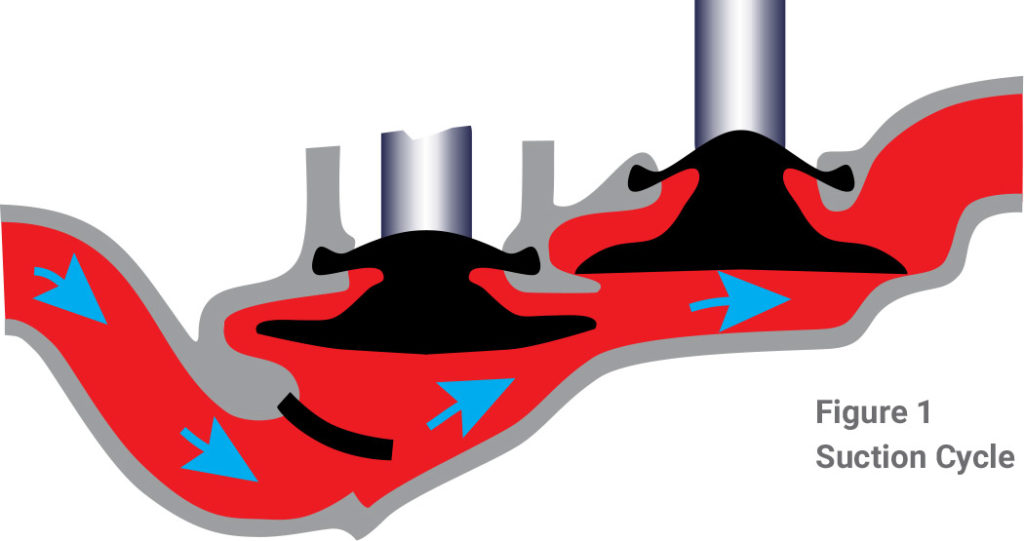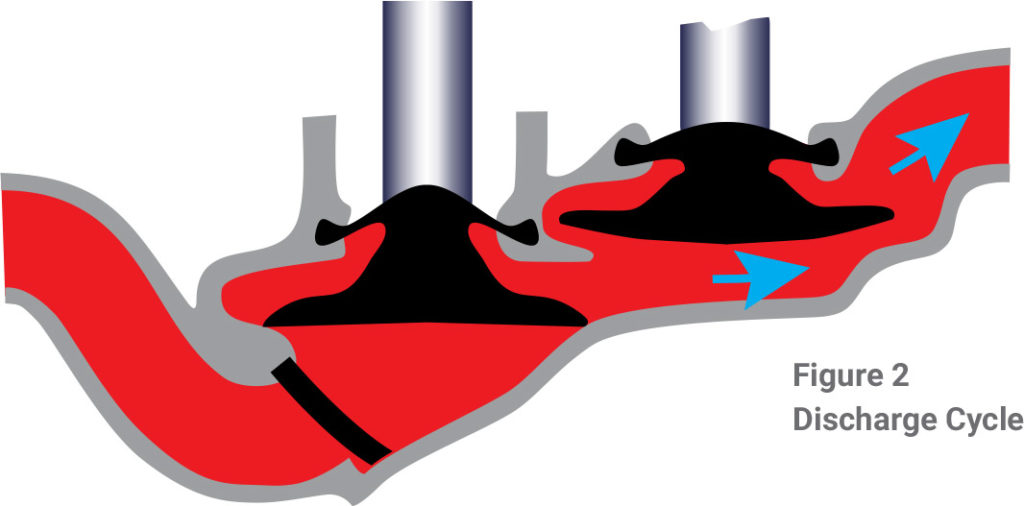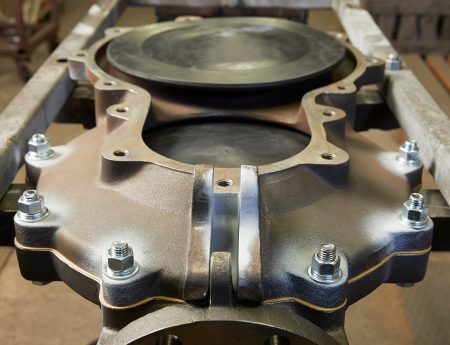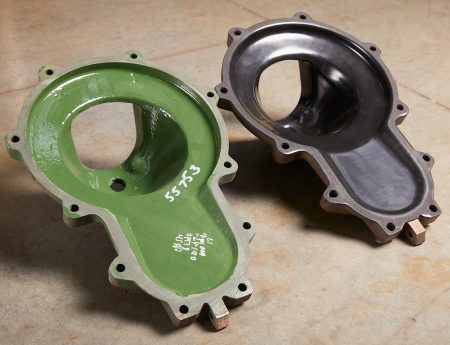Operating Principle of the Double Disc Pump™
PVP’s Double Disc Pump™ combines the performance features of a positive displacement pump and the principle of ‘induced flow’ to provide superior versatility in fluid handling. Based on a ‘free-disc’ technology, the pump utilizes a unique principle of operation. The pump is based on a non-close tolerance design and does not have the wear pattern associated with rotary positive displacement pumps. With this low friction design the pump can run dry without damage.
Working in Unison
The pump’s discs work in unison to perform the duties of both the pumping element and valving element, creating a double acting, non-clogging, pumping action. The hydraulic interaction between the discs moves fluid from suction to discharge. The discs are not captive in the pump housing, eliminating the flex fatigue failures that captive diaphragm pumps experience.
Through an arrangement of connecting rods and a camshaft, a reciprocating action of the discs is created, forming a large cavity between the discs. The discs are rotated 180 degrees out of phase from one another, performing the duties of both pumping and valving during operation.
Pump Cycles
During the suction cycle, the suction disc lifts off its seat creating a vacuum, while the discharge disc is seated, filling the cavity within the pump (figure 1). The discharge cycle creates pressure above the suction disc, causing this disc to seat and forces flow out through the discharge (figure 2). Since the discs are mechanically placed on the seating surface, they positively valve on every revolution, reducing the potential for loss of flow on debris laden and stringy material.

Small displacement per stroke
A double disc pump has a very short stroke length and a small displacement per revolution allowing it to operate at higher speeds. This small displacement per revolution provides a relatively smooth flow as compared to traditional reciprocating pumps. The use of pulsation dampeners helps to reduce the small pulse in flow even more, allowing the pump to be used for pulse sensitive dewatering operations that cannot be handled by typical reciprocating pumps.


Solids, rags and plastics
The large valve-like discs in a double disc pump mean that solids, rags and plastics can be handled without loss of pumping action, where other pumps would fail. The valve-like discs have large seating areas that provide for low internal velocities, extending the pump wear life when handling abrasive sludges and slurries.
Sealed fluid chamber
With the short stroke length and no rotating shaft through the pump body the double disc pump fluid chamber is sealed with flexible “trunnion” components. These “trunnions” eliminate packing, mechanical seals, and require no flushing water. The trunnion is maintenance free, requires no adjustment or lubrication and does not leak providing for a clean, dry installation.

Priming and Re-Priming
The Double Disc Pump will dry prime at 7ft, re-prime at 18ft and generate up to 25”Hg. This is possible due to the inlet side foot valve, we call a clack valve. This device is a priming and re-priming aid and only sees action under a suction lift condition or when the suction line is under a vacuum condition. In flooded suction applications, this device does not get back to the seating surface and does not valve. The pump will operate without the clack valve on flooded suction applications. This unique design allows the pump to pass larger solids, rags and debris that would routinely cause problems like clogging and failure on other types of pump’s internal check valves.